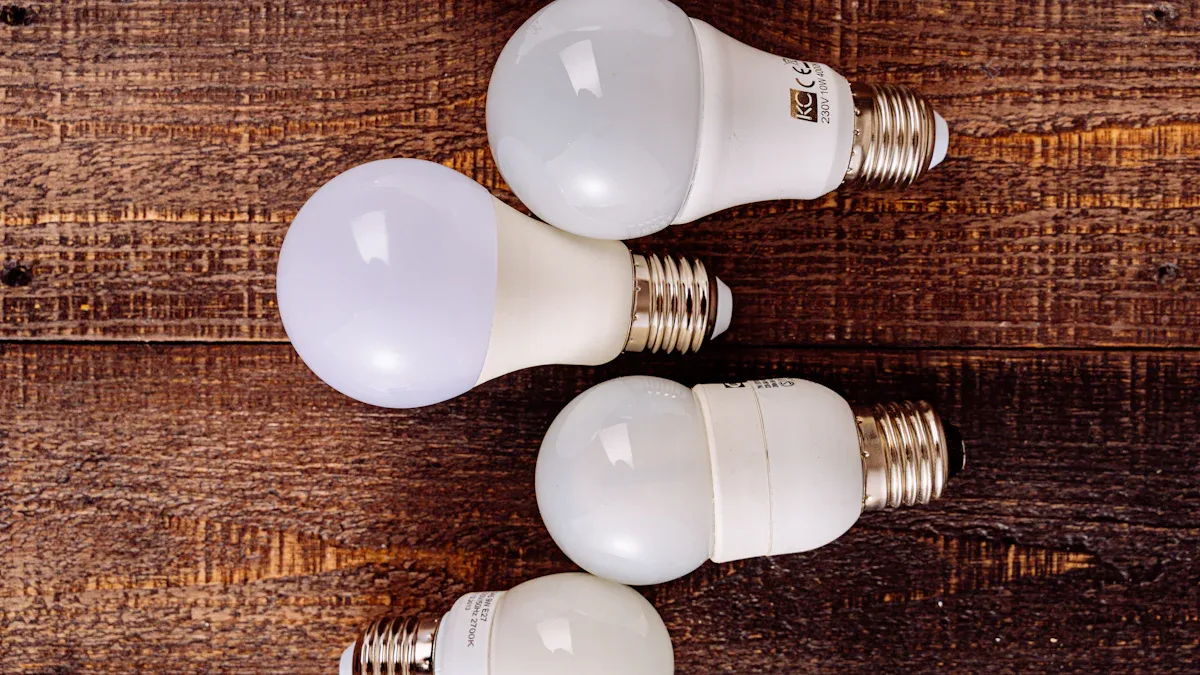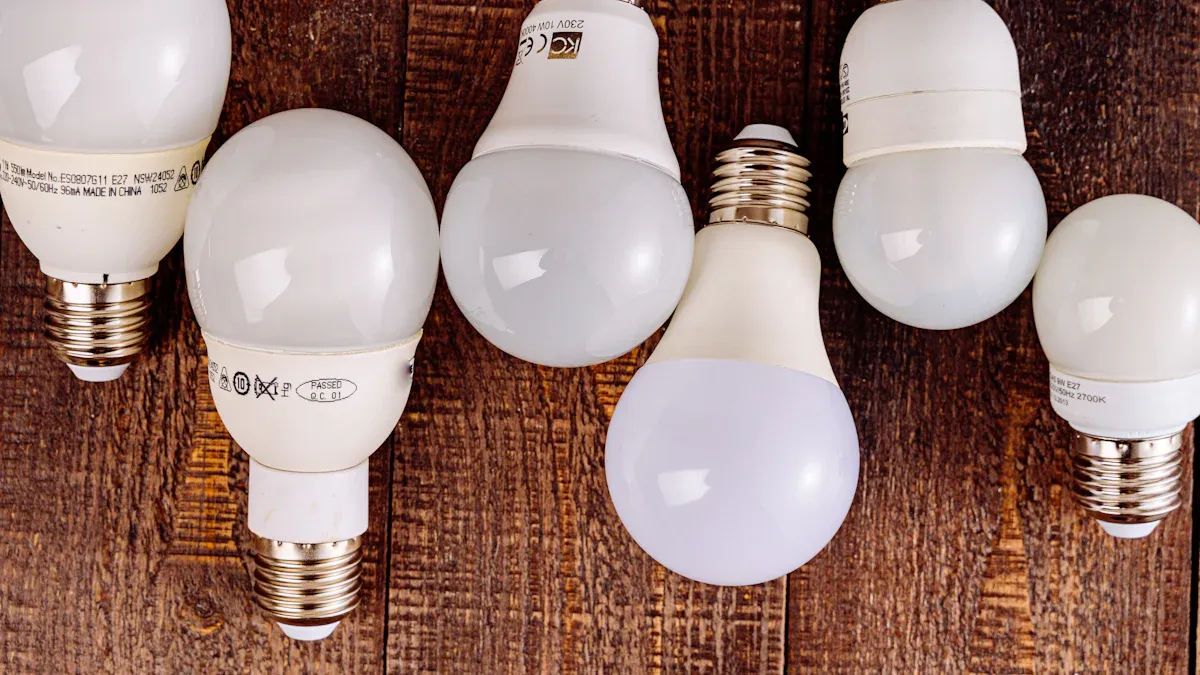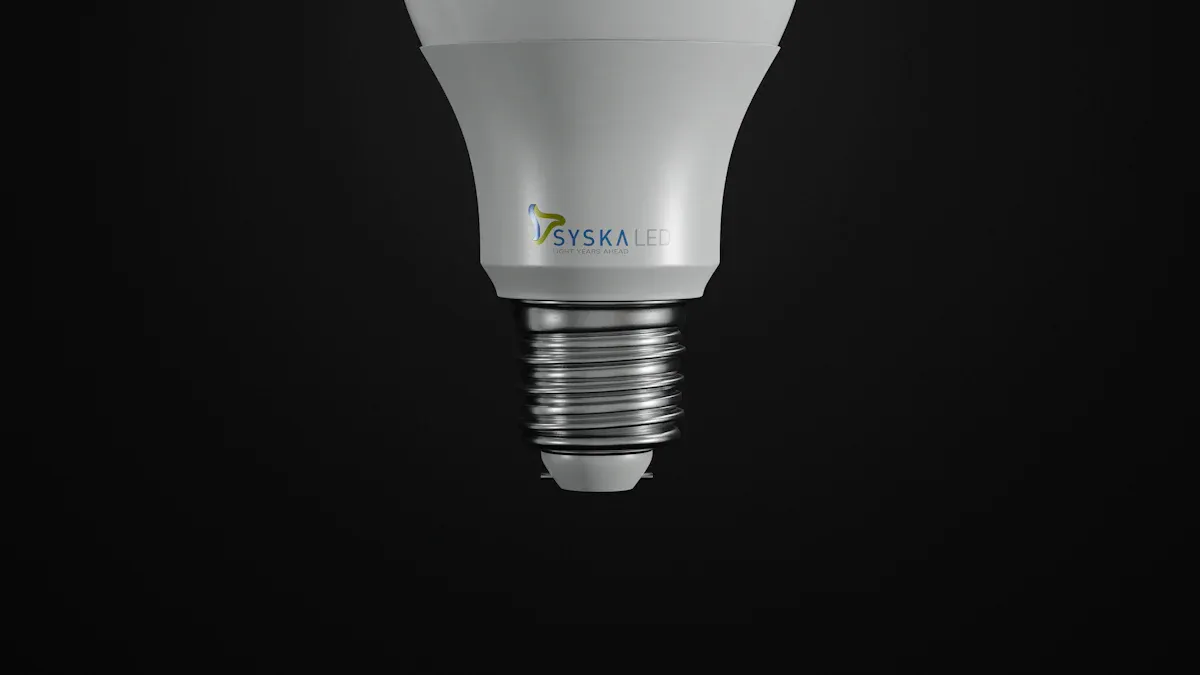Type B LED Bulbs vs. Type A: Differences, Installation Requirements, and When to Choose Each

The main difference between Type B LED Bulbs and Type A is how you install them and connect them to power. You must pay attention to these differences for safety, efficiency, and cost. When you switch from fluorescent to LED light, you can save up to 27% energy at home and 30% in commercial spaces. However, rewiring with Type B can bring electric shock risks, especially if you do not follow safety steps. Always check your fixture, your Product needs, and whether you want to do the work yourself or call a professional. You can find more details in the About Us or Home sections.
Key Takeaways
Type A LED bulbs are simple to put in. They work with ballasts you already have. You do not need to change any wires.
Type B LED bulbs need you to change the wiring. They connect right to the power. They use less energy and need less care.
Pick Type A if you want a fast and easy change. Pick Type B if you want to save money over time and use less energy.
Always look at your light fixture first. Follow safety rules so you do not get shocked.
If you are not sure, ask an expert for help. This keeps your home or business safe.
Key Differences

Type A vs. Type B
There are two main kinds of LED tubes: type a and type b. These types are not the same in how you put them in and how they work with your lights.
Type a led tubes can replace old fluorescent tubes right away. You can use them with the ballast you already have. You do not need to change any wires. Just take out the old tube and put in the new one. This is called plug-and-play. It saves time and you do not need to do electrical work. But not every ballast works with every type a tube. You should read the manufacturer’s guide before buying.
Type b led bulbs are different. You cannot use the old ballast with them. You must take out or skip the ballast and connect the tube to the main power. This makes installing harder. You might need an electrician to help. Type b led tubes connect right to the main voltage. This stops problems from the ballast and makes your lights use less energy. You also do not have to worry about the ballast breaking later.
Tip: If you want a fast and simple change, type a is best. If you want more savings and do not mind extra work, type b led bulbs are better for the future.
Quick Comparison
Here is a table to help you see the differences between type a and type b:
Aspect | Type A LED Bulbs | Type B LED Bulbs |
|---|---|---|
Ballast Compatibility | Works with most existing ballasts; no removal needed | Ballast must be removed or bypassed |
Wiring | No rewiring; plug-and-play | Requires rewiring; direct to mains voltage |
Voltage Requirements | Uses voltage from the ballast | Connects directly to line voltage |
Installation | Simple; no electrical changes | Needs a qualified electrician |
Energy Efficiency | Lower, because ballast uses power | Higher, no ballast losses |
Maintenance | Ballast can still fail | Less maintenance, no ballast to fail |
Socket Requirements | Uses current sockets | May need new non-shunted sockets |
Type a led tubes are easy to put in. You just change the tube. Type b led bulbs need more steps, but you save more energy and have fewer problems later.
Key Points to Remember:
Type a led tubes are easy replacements and work with most ballasts.
Type b led bulbs need you to take out the ballast and wire the tube to the main power.
Type b gives you more energy savings and less work later.
Always check your light fixture and what you can do before picking a type.
Note: If you want the most energy savings and do not want to worry about the ballast, type b is best. If you want a quick change with less work, type a is easier.
Type A LED Bulbs

What Is Type A
Type a led bulbs, also called plug-and-play or ballast-compatible bulbs, are designed for easy upgrades. You can use these bulbs as direct replacements for old fluorescent tubes. Type a led tubes fit into your existing fixture without the need for rewiring. You do not need to remove the ballast. This makes them a popular choice for quick lighting upgrades at home or in offices.
How Type A Works
Type a led lamps work with the ballast already in your fixture. The ballast supplies the right power for the tube. You simply insert the new bulb, and it lights up. Here is how the process works:
The ballast sends power to the type a led tube.
The tube uses this power to produce light.
You do not need to change any wiring or sockets.
The bulb depends on the ballast, so if the ballast fails, the bulb will not work.
Note: If your ballast is old or not compatible, you might see flickering or the bulb may not turn on.
Type A Installation
You can install type a led tubes with just a few steps. The process is simple and does not require special skills. Follow these steps for a safe installation:
Turn off the power at the circuit breaker.
Remove the old fluorescent tube from the fixture.
Check that the new type a led lamp matches your fixture and ballast.
Insert the new tube by lining up the pins and twisting to lock it in place.
Turn the power back on and test the light.
You only need basic tools like a ladder and screwdriver. You do not need to touch any wires. If you are unsure about the process, you can ask a professional for help.
Type A Pros and Cons
Type a led lamps offer many benefits, but there are also some drawbacks. Here is a quick overview:
Pros:
High energy efficiency, using up to 70% less energy than old bulbs.
Long lifespan, often up to 50,000 hours.
Instant full brightness with no warm-up time.
Easy installation with no rewiring.
Low heat output and safe for most environments.
Environmentally friendly and recyclable.
Cons:
Higher upfront cost than traditional tubes.
The bulb relies on the ballast, which can fail over time.
Some ballasts may not be compatible, causing flickering or failure.
Blue light from some bulbs can cause discomfort.
Type A Best Uses
You should choose type a led tubes when you want a fast and easy upgrade. They work best in places where you want to avoid rewiring, such as:
Offices and schools with many fixtures.
Homes where you want to replace old fluorescent tubes quickly.
Commercial spaces that need minimal downtime.
Areas where you want to keep costs low for installation.
Tip: If you want to save energy and avoid complex installation, type a led lamps are a smart choice.
Type B LED Bulbs
What Is Type B
Type b led bulbs, also known as direct wire or ballast bypass bulbs, give you a way to upgrade your lighting for better energy efficiency. These bulbs do not use the old ballast in your fixture. Instead, you connect them straight to the main power. Type b led tubes have an internal driver that lets them run on line voltage. You often see these bulbs in places where you want to cut down on maintenance and save more energy over time.
How Type B Works
Type b led lamps work by connecting directly to the power source. You must remove or bypass the old ballast. The tube gets power from the main line, not from the ballast. This setup means you do not have to worry about the ballast failing later. For wiring, you need to use non-shunted lamp holders. You also need to label the fixture to show it has been rewired for direct line voltage. This step helps keep everyone safe during future lamp changes.
Type B Installation
You need to follow special steps for type b led lamps installation. First, turn off the power at the breaker. Remove the old tube and the ballast. Next, connect the wires from the main power directly to the lamp holders. Most type b led tubes use single-end powered wiring, so you only supply power to one end of the tube. Use non-shunted sockets for safe operation. After wiring, label the fixture to warn others about the direct voltage. This installation is more complex than plug-and-play bulbs. You may want a licensed electrician to help, especially in commercial settings where voltage can be high.
⚠️ Safety Tip: Direct wiring to line voltage can be dangerous. Always follow safety rules and local codes. If you are not sure, ask a professional for help.
Type B Pros and Cons
Here are some pros and cons of type b led lamps:
Pros:
You get higher energy efficiency because there is no ballast using extra power.
Type b led bulbs last longer and need less maintenance.
You avoid future ballast failures.
These bulbs work well for large projects and can lower costs over time.
Cons:
Installation is more complex and takes more time.
There are safety risks if you do not wire the fixture correctly.
You may need to buy new non-shunted sockets.
You must label the fixture to prevent future hazards.
Type B Best Uses
You should use type b led lamps when you want the most energy savings and less maintenance. They work best in places like:
Warehouses and factories with many fixtures.
Schools and hospitals where you want long-lasting lights.
Commercial buildings where you want to avoid future ballast problems.
Any area where you want to boost efficiency and lower long-term costs.
If you want to upgrade your lighting for the best efficiency and do not mind a more involved installation, type b led tubes are a smart choice.
Type B LED Lamps vs. Type A
Performance
You want high performance from your lighting. Both type a and type b LED lamps offer better light quality than old fluorescent tubes. LEDs give you brighter light and better color rendering, which means colors look more natural. Lumen output tells you how bright the tube is, and Color Rendering Index (CRI) shows how true colors appear. Most LED tubes, whether type a or type b, have high CRI and good lumen output. You will notice improved light quality in your space. Type b LED lamps connect directly to power, so you do not worry about ballast problems that can lower performance over time.
Safety
Safety matters when you change your lighting. Type a tubes are safer for most people because you do not need to touch any wires. You just plug them in. Type b LED lamps need you to bypass the ballast and rewire the fixture. This step can be risky if you do not know electrical work. You must use the right sockets and label the fixture to warn others. If you wire type b LED bulbs wrong, you can create a shock hazard. Always turn off the power and ask a professional if you are not sure.
Cost
You want to save money, but you also want good lighting. Type a tubes cost less to install because you do not need an electrician. You just swap the tube. Type b LED lamps cost more at first because you pay for rewiring and sometimes new sockets. Over time, type b saves you more money. You do not need to replace ballasts, and you get better energy efficiency. Here is a quick table to compare costs:
Aspect | Type A (Plug and Play) | Type B (Ballast Bypass) |
|---|---|---|
Installation Cost | Lower | Higher |
Energy Savings | Good | Better |
Maintenance Costs | Higher | Lower |
Total Cost of Ownership | Good | Better |
Compatibility
You need to check if your fixture works with the tube you choose. Type a tubes need a working ballast. If the ballast fails, your light will not turn on. Type b LED lamps do not use a ballast, but you must rewire the fixture. You may need to change the sockets, especially if you switch from T8 to T12 tubes. Common issues include:
Type b LED lamps need non-shunted sockets.
Type a tubes may not work with all ballasts.
Wrong tube size or wiring can cause safety problems.
Hybrid tubes exist, but they cost more and may not be as efficient.
Tip: Always check your fixture and read the instructions before you buy new tubes.
Choosing the Right Type
Key Factors
You want to choose the best LED bulb for your space. Start by looking at your fixture. Check if it uses a ballast. If you want a quick upgrade, type A LED tubes work well with most ballasts. If you want more energy savings and less maintenance, type B LED bulbs are a better choice. Think about your budget. Type A bulbs cost less to install, but you may need to replace the ballast later. Type B bulbs need more work at first, but you save money over time because you do not need to worry about the ballast. Your goals matter too. If you want the easiest installation, type A is best. If you want the highest efficiency and do not mind rewiring, type B is the right pick.
💡 Tip: Always match the bulb type to your fixture and your needs. This helps you avoid problems and get the best results.
Selection Checklist
Use this checklist to help you pick the right LED tube for your fixture and application:
Check the voltage and current ratings of your fixture. Make sure the power supply and drivers are compatible.
Look at the heat sink design. Think about the room temperature to help your LED last longer.
Choose the right beam angle for your space. Pick a Color Rendering Index (CRI) that shows colors clearly.
Follow the installation requirements in the instructions. Plan for regular maintenance to keep your lights working well.
Pick energy-efficient LEDs. Think about how easy it is to recycle the parts.
Match the bulb to your needs. Look at how bright you want the light, the color temperature, and if you need dimming.
📝 Note: This checklist helps you avoid common mistakes and makes your lighting upgrade easier.
Mistakes to Avoid
Many people make mistakes when they pick or install LED bulbs. Some forget to check if the ballast works with type A tubes. This can cause flickering or humming. Others do not rewire fixtures the right way for type B bulbs. Bad wiring can lead to sparks or even fires. Always follow the instructions from the manufacturer. Use warning labels on fixtures that have been rewired for type B bulbs. This keeps everyone safe and stops someone from putting in the wrong bulb later. If you use type B bulbs, make sure they have a UL label and install them as the instructions say. This helps you avoid problems with safety and insurance.
⚠️ Safety Alert: Never skip steps during installation. If you feel unsure, ask a licensed electrician for help.
You have learned the main ways type a and type b LED bulbs are different. Type a bulbs are easy to put in. You just use the plug-and-play method with the electronic ballast you already have. Type b bulbs are harder to install. You must rewire and connect them right to the line voltage. Always pick the bulb that fits your fixture and what you need. This keeps things safe and saves energy. Check the list before you buy a bulb. If you are not sure, talk to a lighting expert. Saving money and staying safe are very important. Take your time and plan your upgrade well.
Remember: Picking the right bulb and installing it the right way stops accidents and keeps your lights working.
Installation Aspect | Type A LED Bulbs | Type B LED Bulbs |
|---|---|---|
Needs electronic ballast | Ballast must be bypassed | |
Installation Complexity | Simple | More complex, needs rewiring |
FAQ
What happens if you use a Type A LED bulb with a bad ballast?
You may see flickering, dim light, or no light at all. The bulb depends on the ballast to work. If the ballast fails, the bulb will not turn on.
Can you install Type B LED bulbs without an electrician?
You can install Type B bulbs if you know how to rewire fixtures safely. Many people hire an electrician because direct wiring can be dangerous if done wrong.
Do Type B LED bulbs save more energy than Type A?
Yes, Type B bulbs save more energy. They do not use a ballast, so all the power goes to the bulb. This means lower electric bills and less wasted energy.
How do you know if your fixture is compatible with Type A or Type B?
Check your fixture’s label or manual. Type A bulbs need a working ballast. Type B bulbs need direct wiring. Always read the bulb’s instructions before you buy.
Is it safe to mix Type A and Type B bulbs in one fixture?
No, you should not mix them. Each type needs a different wiring setup. Mixing them can cause safety problems or damage the bulbs.
See Also
Understanding LED Replacement Lights: Varieties, Advantages, And Setup
Choosing GE LED Bulbs: Key Features And Helpful Benefits
How To Pick Ideal LED Bulbs For Various Light Fixtures
Outdoor LED Lighting: Advantages, Varieties, And Installation Tips
Step-By-Step Guide To Installing LED Lamps On Various Fixtures

